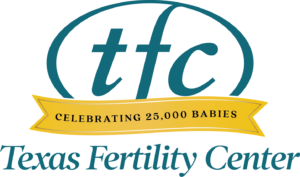
Single embryo transfer has become much more common in the world of IVF
In the past, women who underwent in vitro fertilization (IVF) had a much greater risk of having a pregnancy with high-order multiples (three or more babies). That’s because doctors would transfer multiple embryos during the same cycle. Thankfully, advances in reproductive medicine now make it possible to do a single embryo transfer. Today, Erika Munch MD, our San Antonio infertility specialist, can transfer one embryo at a time and feel quite confident that it will develop into a healthy baby.
A quick look at what happens during an IVF cycle today versus in the past
To understand single embryo transfer, it makes sense to start with a quick overview of IVF. During in vitro fertilization, a woman takes medications to stimulate her ovaries to develop multiple eggs. After retrieving these eggs, embryologists in the lab fertilize them with sperm. They then monitor the fertilized eggs to see which ones develop into embryos. Once the embryos reach the blastocyst stage (around Day 5), our San Antonio infertility specialist transfers at least one of them into the patient’s uterus.
Today, we can transfer just one embryo because we have many tools and techniques to assess the quality of IVF embryos before transfer. Some examples include preimplantation genetic testing (PGT) and using high-powered microscopes to examine each embryo’s morphology (appearance). This allows embryologists to learn more about the maturity and chromosomal health of each embryo. Using this information, they can recommend the best embryo for transfer.
In the not-so-distant past, IVF labs did not have such advanced methods to assess embryos. As a result, doctors would transfer multiple embryos at the same time in hopes that they would result in a pregnancy. Sometimes, this would allow a patient to have just one baby. However, in other cases, all embryos would implant, leading to a pregnancy with multiples.
Understanding the importance of single embryo transfer
At first glance, many patients don’t think it would be a problem to have more than one baby at the same time. In fact, they might believe it sounds ideal, after facing years of infertility. Dr. Munch understands this feeling. However, she wants patients to know why having a pregnancy with multiples can be risky.
Carrying more than one baby at the same time can be dangerous for both the mother and her babies. For example, over 60% of twins and nearly all higher-order multiples are born prematurely. This increases the likelihood that the babies will have to spend time in the NICU and experience both short-term and long-term health issues.
As for mothers who are carrying multiples, they are more likely to develop conditions like gestational hypertension (high blood pressure) and anemia.
By transferring just one embryo, Dr. Munch can decrease the chance of a patient having a pregnancy with multiples.
Discover who makes a good candidate for this type of transfer
Because all patients are unique, it’s important to consider each woman’s medical history and family-building goals before recommending a single embryo transfer. However, this type of transfer is typically a good option for patients under age 35.
As for women outside of this age range, the American Society for Reproductive Medicine (ASRM) has the following recommendations.
- Strongly consider transferring just one embryo in patients between age 35 and 37.
- Transfer no more than two blastocyst embryos in patients between age 38 and 40.
- Transfer no more than three blastocyst embryos in patients between age 41 and 42.
Once patients reach age 43, ASRM recommends considering each patient’s situation and using caution to avoid a pregnancy with multiples.
If you have questions about single embryo transfer or any other fertility treatment, contact us today. Our San Antonio infertility specialist can help you learn more about your family-building options so that you can safely start or grow your family.
Dr. Erika Munch Talks About Single Embryo Transfer



